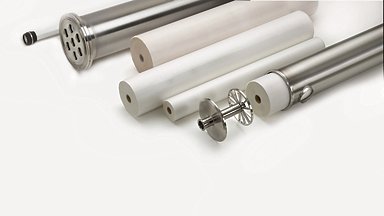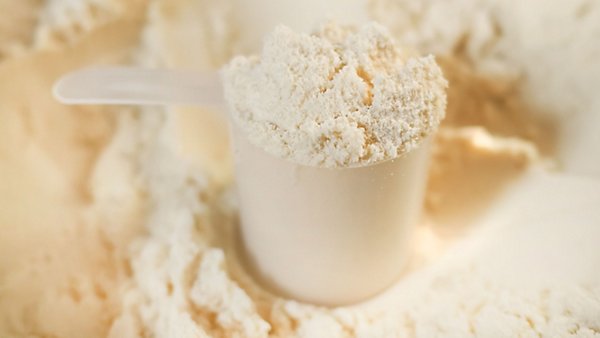Unlocking hidden potential
Whey is a valuable product that is in high demand because it contains proteins that can be concentrated and isolated to create ingredients for a wide variety of value-added products. Whey contains proteins, lactose and minerals and is fractionated by means of membrane filtration.
Unlocking hidden potential
Whey is a valuable product that is in high demand because it contains proteins that can be concentrated and isolated to create ingredients for a wide variety of value-added products. Whey contains proteins, lactose and minerals and is fractionated by means of membrane filtration.
Uses

WHEY PROTEIN CONCENTRATE AND ISOLATE (WPC AND WPI)
A high-value product
Concentrated whey, or whey protein concentrate (WPC), is a high-value product considered to be the world’s most nutritionally valuable protein source. It is a key ingredient in baby food, sports and senior nutrition products, and many other products. WPC ranges in protein content (measured as protein percentage in dry matter) from 35 percent to 80 percent. To make a 35 percent protein product, the liquid whey is concentrated about six-fold to an approximate total dry solids content of 9 percent. To achieve WPC powder of more than 80 percent, the liquid whey is first concentrated by ultrafiltration to a solids content of about 25 percent. The concentrate is then diafiltered to remove lactose and ash and raise the protein concentration in the dry matter. Diafiltration involves adding water to the feed as filtration proceeds. This washes out low molecular components – basically lactose and minerals. These then pass through the filtration membranes. Whey protein isolate (WPI) containing more than 92 percent in dry matter is a popular ingredient in protein supplements. It is produced by microfiltration using whey that has been pre-concentrated by ultrafiltration.

Water recovery
Sustainable savings
Water is a crucial and limited resource in the dairy industry almost everywhere. Whey’s very high water content of 94 percent makes it an interesting target for water recovery. Using reverse osmosis filtration technology, water can be removed from whey and then reused elsewhere, for instance for cleaning. If purified to a high level it can even be reused in the production process. The result is a more sustainable – and cheaper – process that reduces food producers’ consumption of drinking water.

LOWER CAUSTIC SOLUTION CONSUMPTION
Recovery of cleaning chemicals
The cleaning of processing equipment requires large volumes of caustic solution. At the end of a cleaning cycle, the caustic solution contains dissolved and suspended matter that renders it unsuitable for direct use in a new cleaning sequence. All too often, spent caustic solution is sent for waste. A more sustainable alternative involves purifying it for reuse. Typically, a membrane filtration setup allows 70 to 90 percent of spent caustic solution to be recovered and reused.
Technologies

Precise control
Nanofiltration
Nanofiltration plays an integral part in advanced whey processing techniques, permitting the customisation of whey fractions based on specific applications and market demands. It enables the production of high-value whey products with controlled compositions, improved functionality and enhanced sensory qualities. Specifically, nanofiltration can be used for protein concentration to create protein-rich fractions. Nanofiltration can also be used to selectively separate minerals in whey based on their molecular sizes. This can be beneficial for controlling the whey’s mineral content and obtaining specific mineral fractions

Bacteria and spore removal
Microfiltration
Microfiltration is often employed as part of a multi-step processing system in conjunction with ultrafiltration and nanofiltration to achieve specific outcomes in terms of whey product composition, quality and functionality. The primary roles of microfiltration are bacteria and spore removal and fat separation. Microfiltration membranes allow most dissolved substances to pass through while rejecting bacteria and fat globules, which remain in the retentate. Removing bacteria, yeast, and other microorganisms from whey enables the production of microbiologically stable whey products. Fat separation is particularly important in the production of low-fat or fat-free whey products.

Useful concentration step
Reverse osmosis
Reverse osmosis plays a major role in concentrating liquid whey to reduce its high water content. Reverse osmosis membranes allow the passage of water molecules while blocking the passage of larger molecules and solutes. This enables the removal of water from whey, resulting in a concentrated whey solution. Reverse osmosis is a typical first step in whey concentration to increase the dry-matter content. Water removed from whey can be reused, for instance for cleaning. If purified to a high level it can even be added back to the production process.








